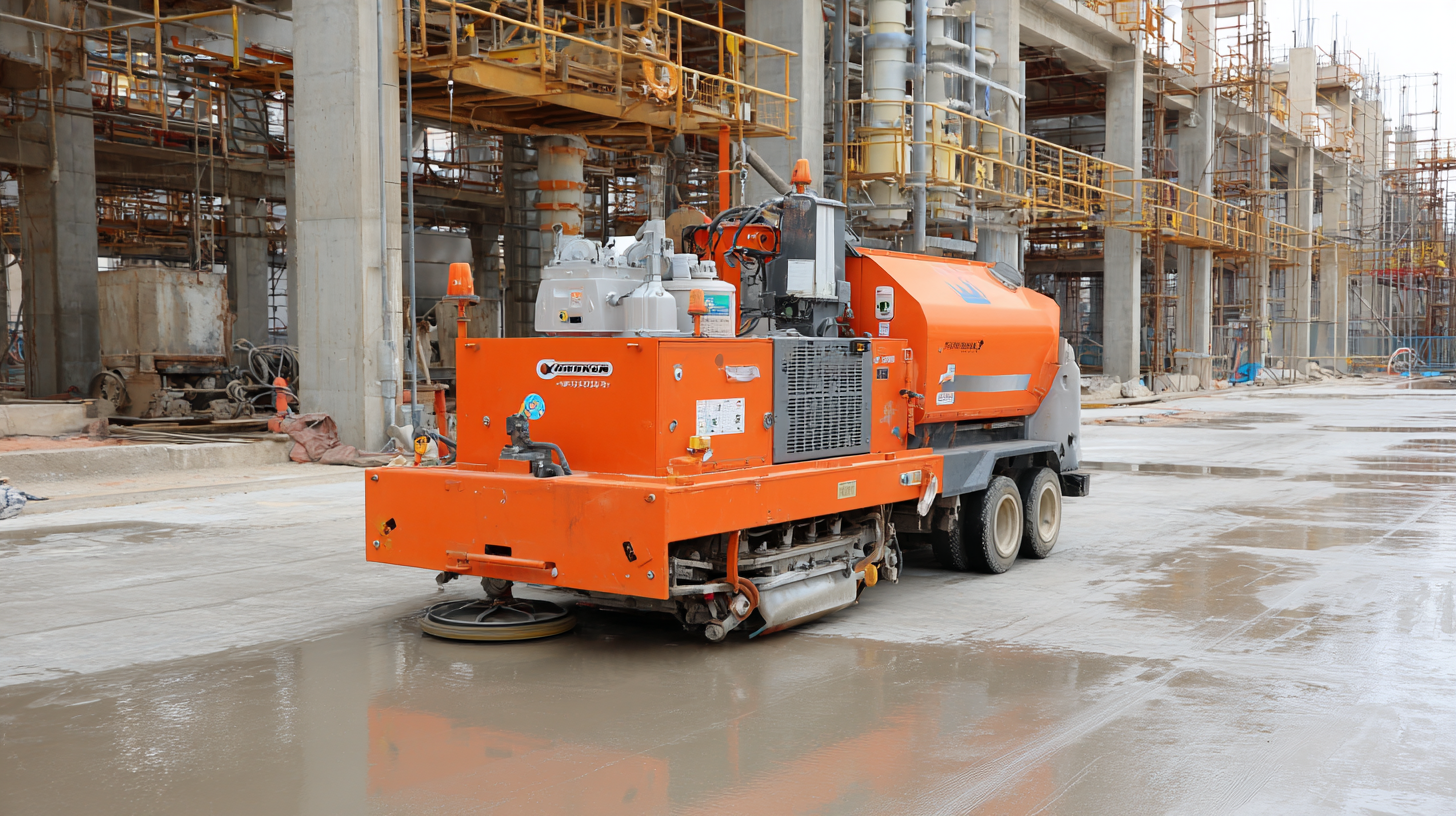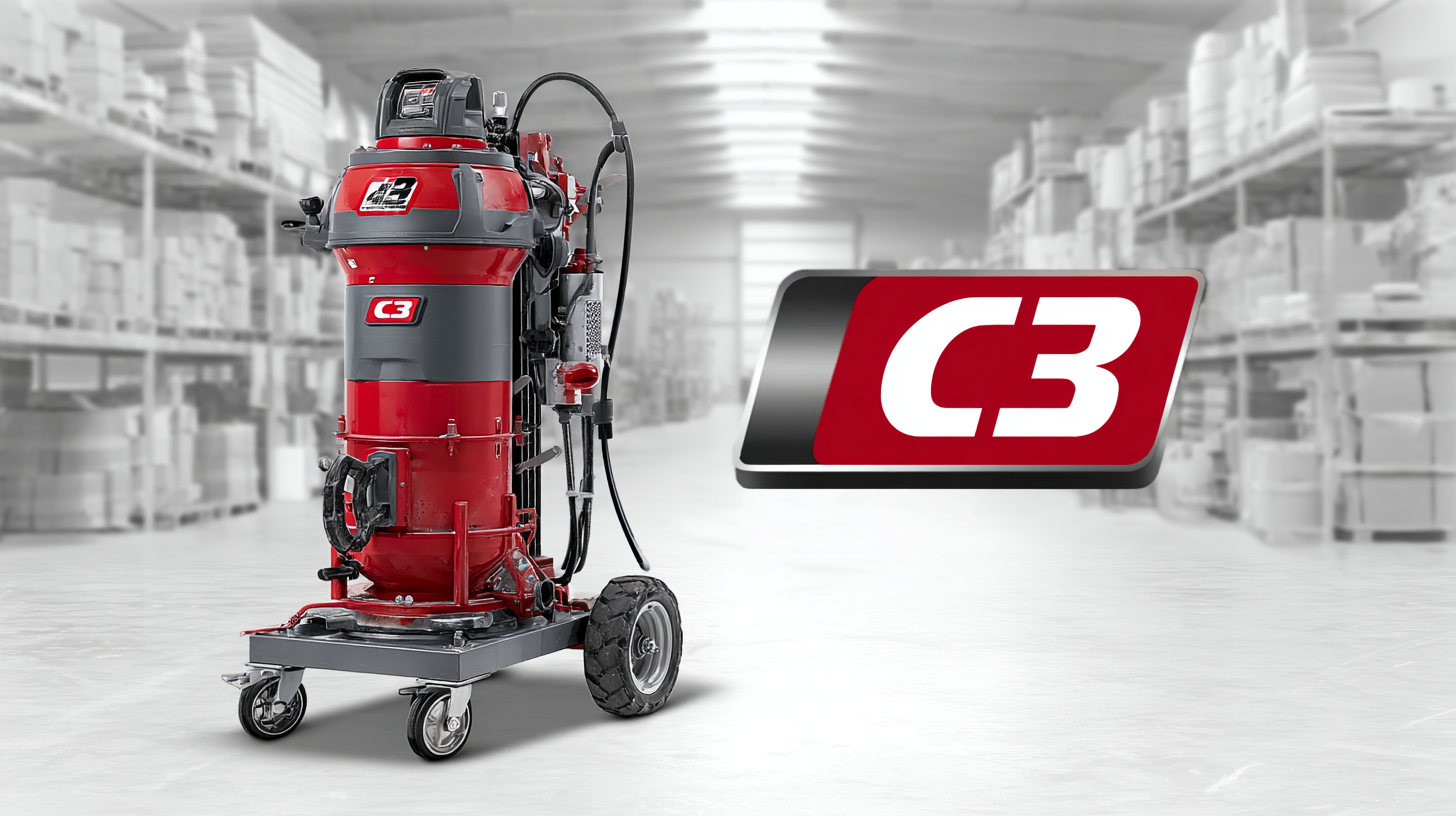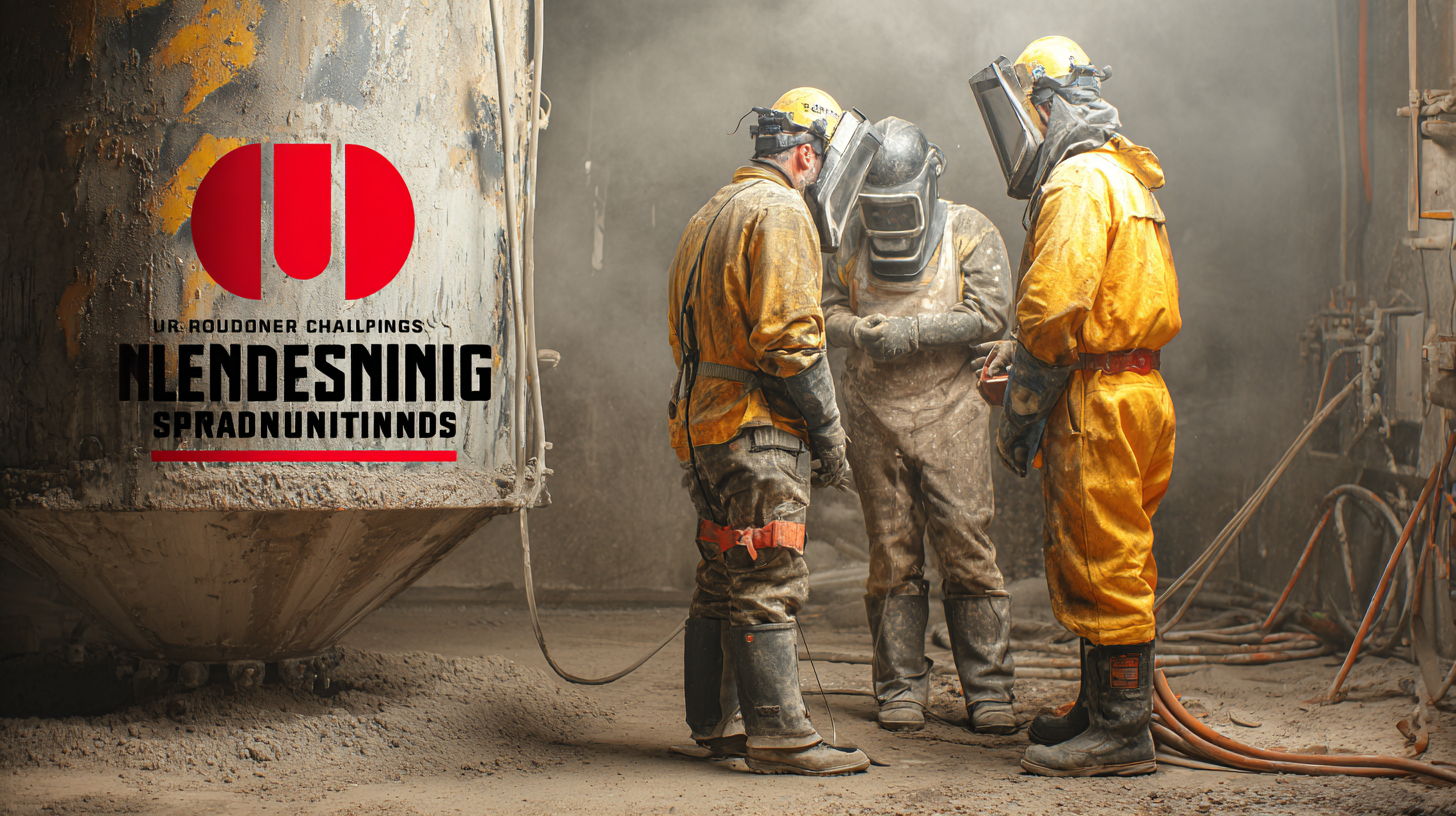Office USA: 706-658-1122 | Tech Support: 706-362-4813
Office Bulgaria: +359 431 64477
Understanding the Challenges in Achieving the Best Concrete Grinding Equipment Standards
In recent years, the demand for high-quality concrete grinding equipment has seen significant growth, driven by the rapid expansion of construction and infrastructure projects worldwide. According to a report by MarketsandMarkets, the global concrete grinding equipment market is projected to reach USD 1.22 billion by 2025, reflecting a compound annual growth rate (CAGR) of 5.2%. This surge is largely attributable to the increasing adoption of polished concrete floors and the rising trend of eco-friendly construction practices. However, achieving the best standards in concrete grinding equipment presents various challenges, including the need for innovation in technology, adherence to stringent safety regulations, and addressing environmental concerns. As the cornerstone of effective concrete surface finishing, understanding these challenges is crucial for manufacturers and contractors alike, particularly as top-tier Chinese manufacturers expand their footprint globally, offering advanced solutions that meet international standards.

Key Factors to Consider When Selecting Concrete Grinding Equipment
When selecting concrete grinding equipment, various key factors must be considered to ensure optimal efficiency and effectiveness. One crucial aspect is the type of grinder that best suits your specific project needs. For example, walk-behind grinders are ideal for large areas, while handheld grinders are perfect for smaller, tight spaces. Assessing the size and scope of your job can guide your choice to maximize productivity.
Another critical tip is to evaluate the diamond discs or blades utilized with the grinding equipment. Different materials and grit levels will yield varying results on various types of concrete surfaces. For instance, using finer grit discs will achieve a smoother finish, while coarser grits are suitable for heavy material removal. Always consider your desired finish and efficiency before making a purchase.
Lastly, operator comfort should not be overlooked. Vibrating equipment can lead to fatigue and decreased productivity. Investing in ergonomic designs with features like adjustable handles and weight distribution can significantly enhance user experience. Ensuring both comfort and control allows for longer working hours and better results on the job.

Common Challenges Faced by Professionals in Concrete Grinding
Concrete grinding professionals often encounter a range of challenges that can impede their ability to deliver high-quality results. One significant issue is the variability in concrete composition, which can affect grinding performance. Different mixes can lead to inconsistent grinding results, requiring professionals to adapt their techniques and equipment to each specific job. This unpredictability necessitates not only a deep understanding of the materials but also the flexibility to switch between various grinding tools and methods.
Another common challenge is dust control. Concrete grinding generates a considerable amount of dust, which can pose health risks to workers and affect the environment. Professionals must invest in effective dust extraction systems to maintain a safe working environment while complying with regulations. Additionally, finding the right balance between aggressive grinding and filter maintenance can be tricky, as ineffective dust management can lead to project delays and increased operational costs. Balancing performance with safety and environmental responsibility is a critical aspect of modern concrete grinding practices.
Essential Features for High-Quality Concrete Grinding Machines
When it comes to concrete grinding, selecting the right machine requires a keen understanding of its essential features. High-quality concrete grinding machines must possess powerful motors that provide robust performance. This is crucial for handling tough surfaces and achieving smooth finishes effectively. Additionally, the machine's weight plays a significant role; heavier machines tend to provide better results by allowing more consistent pressure on the grinding surface, leading to faster material removal.
Another important aspect to consider is the availability of different grinding tools and attachments. Versatile equipment that allows for easy swapping of diamond pads or grinding segments is essential for tackling a variety of surfaces and achieving customized results. Moreover, a good dust collection system is vital for maintaining a clean workspace and ensuring the health and safety of the operator. By focusing on these key features, users can be better equipped to meet the challenges associated with concrete grinding and achieve high standards in their projects.
Challenges in Achieving High-Quality Concrete Grinding Equipment Standards
Best Practices for Maintaining and Operating Concrete Grinding Equipment
Maintaining and operating concrete grinding equipment effectively is crucial for achieving optimal performance and durability. One of the best practices is regularly inspecting the equipment for wear and tear. According to a report from the American Concrete Institute, equipment maintenance can enhance operational efficiency by up to 30%, which significantly impacts project timelines and costs. Regularly checking the grinding heads, belts, and dust collection systems ensures that equipment operates at peak performance, reducing downtime caused by unexpected failures.
In addition to routine inspections, adhering to the manufacturer’s guidelines for operation and maintenance is essential. Studies indicate that improper use of equipment can lead to a 50% decrease in lifespan. Implementing a consistent training program for operators can mitigate risks, as trained personnel are less likely to misuse equipment and more adept at identifying potential issues before they escalate. Moreover, incorporating feedback from equipment performance data allows for informed adjustments to grinding techniques, further optimizing the grinding process. With the right practices in place, operators can ensure their concrete grinding equipment meets the highest standards of efficiency and longevity.
Understanding the Challenges in Achieving the Best Concrete Grinding Equipment Standards - Best Practices for Maintaining and Operating Concrete Grinding Equipment
| Dimension | Challenge | Best Practice |
|---|---|---|
| Equipment Durability | Wear and tear during operation | Regular inspection and maintenance schedules |
| Operator Training | Insufficient skills and knowledge | Comprehensive training programs for operators |
| Dust Control | Health hazards from silica dust | Use of proper dust extraction systems |
| Surface Preparation | Inconsistent finishing quality | Adhering to a standardized procedure for surface preparation |
| Equipment Efficiency | Inadequate performance leading to delays | Regular calibration and upgrades of equipment |
Innovative Technologies Shaping the Future of Concrete Grinding Solutions
 The concrete grinding industry is undergoing a significant transformation, driven by innovative technologies that promise to enhance performance and efficiency. One of the most prominent advancements includes the integration of automated grinding machines equipped with artificial intelligence. These machines not only improve precision but also reduce human error, resulting in a smoother finish and quicker turnaround times. As a result, contractors can meet tighter deadlines without compromising quality, fundamentally changing how projects are managed.
The concrete grinding industry is undergoing a significant transformation, driven by innovative technologies that promise to enhance performance and efficiency. One of the most prominent advancements includes the integration of automated grinding machines equipped with artificial intelligence. These machines not only improve precision but also reduce human error, resulting in a smoother finish and quicker turnaround times. As a result, contractors can meet tighter deadlines without compromising quality, fundamentally changing how projects are managed.
Another noteworthy development is the emergence of diamond tooling and enhanced abrasives designed for various concrete surfaces. These tools are engineered to last longer and provide exceptional grinding results, adapting to different materials and conditions. This increased versatility allows professionals to tackle a wider range of projects, from residential floors to large commercial spaces. Furthermore, advancements in dust collection systems are ensuring a cleaner work environment, complying with stricter regulations while prioritizing the health and safety of workers. The future of concrete grinding solutions is undoubtedly poised for innovation, driven by these technological breakthroughs.
